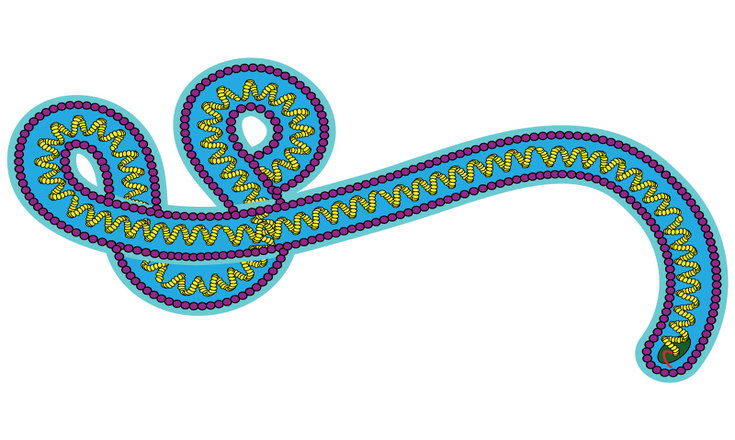It seems that things are not getting any easier in the year 2020. Earlier this week, #Ebola was the number one trending topic on Twitter in the United States. On June 1, Tedros Adhanom Ghebreyesusthe, the Director-General of the World Health Organization (WHO), tweeted, “A new #Ebola outbreak detected in western #DRC, near Mbandaka, Équateur province…The country is also in a final phase of battling Ebola in eastern DRC, #COVID19 & the world’s largest measles outbreak.”
Recalling the largest Ebola outbreak during the years 2014-2016, the media went wild after WHO reported the first cases of Ebola virus disease (EDV) in the area of southeastern Guinea. The first early cases were a clear sign to the health organizations that it would represent the world’s largest West Africa Ebola virus pandemic. In total, 28,616 cases were confirmed, and 11,310 deaths were reported in Guinea, Liberia, and Sierra Leone.
Symptoms of the Ebola virus disease include fever, weakness, headache, muscle, joint, and abdominal pain, diarrhea and vomiting, and unexplained hemorrhaging. The Ebola virus disease has a 50% fatality rate. Ebola is transmitted through physical contact with sick or dead animals. It was first named “Ebola” after the River Ebola in Congo. However, this is not the first Ebola outbreak for the Domestic Republic of the Congo, but in fact, it’s the eleventh Ebola outbreak since the first discovery in the country in 1976. For Mbandaka, this is the ninth Ebola outbreak. So far, the Ministry of Health has found at least six cases that were confirmed of the Ebola virus in Wangata, DRC.
According to a CNN report on June 2, four people died in the fresh Ebola outbreak in DRC, including a 15-year-old girl. The United Nations International Children’s Emergency Fund (UNICEF) stated: “The death occurred between 18 to May 30, but it was not confirmed that it was because of the Ebola virus until May 30.” WHO stated, “It is likely more people will be identified with the disease as surveillance activities increase.” A June 3 article in U.S. News & World Report stated that in addition to cases discovered in the eastern part of DRC, two new Ebola infection cases appeared in the western part of DRC, about 93 miles away from the original six cases.
According to the New York Times, the Democratic Republic of the Congo was about to announce an official end to the Ebola epidemic on the eastern side of the country less than a few months ago. The outbreak lasted at least two years and killed more than 2,275 people. Then, just after the announcement, a few new Ebola cases were confirmed, and the outbreak couldn’t be declared over. However, it was also stated in the article that the virus is in its last stage.
Not only that, but we must acknowledge that the Democratic Republic of the Congo is not just suffering from the Ebola Virus Disease, but it is also battling COVID-19, and the world’s largest measles outbreak. While the Ebola virus and COVID-19 have drawn most of the media’s attention, measles has killed more people than the number of both Ebola and COVID-19 cases combined. According to WHO Africa, there have been more than 350,000 measles cases and approximately 6,700 deaths since 2019.
It remains unclear how the disease was able to expand while the city was in lockdown. However, Dr. Matshidiso Moeti, WHO’s regional director for Africa, informed in her tweet that although the current Ebola outbreak in Mbandaka remains a challenge, WHO, the Ministry of Health of DRC, and Africa’s CDC have strengthened their capacity to respond to pandemics. Quoted in Dr. Moeti’s tweet, “With each experience, we respond faster and more efficiently.” Tedros Adhanom Ghebreyesus, the Director-General of the World Health Organization (WHO), also said in his statement, “This is a reminder: COVID-19 isn’t the only health threat people face.”
Author

A young STEM student aspired for Mechanical Engineering and a staff writer at the Collegian. She's interested in design, machines, and the advancement of technology. Her dream is to use her design and technology skills to achieve a significant role in a dominantly male field. She enjoys playing video games, cooking, and mostly spending her time studying.







Be First to Comment